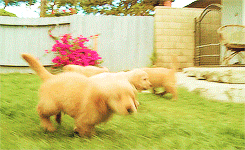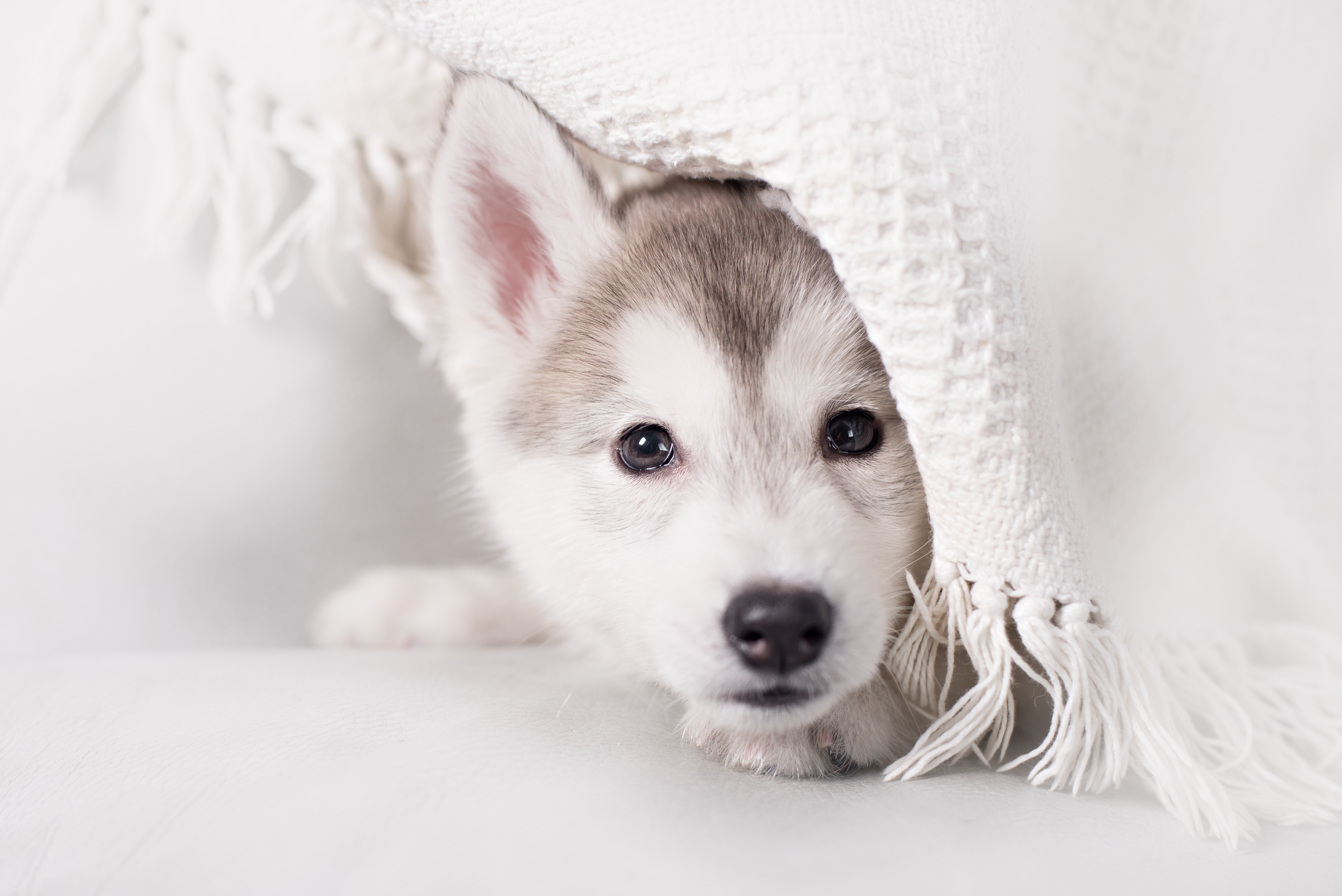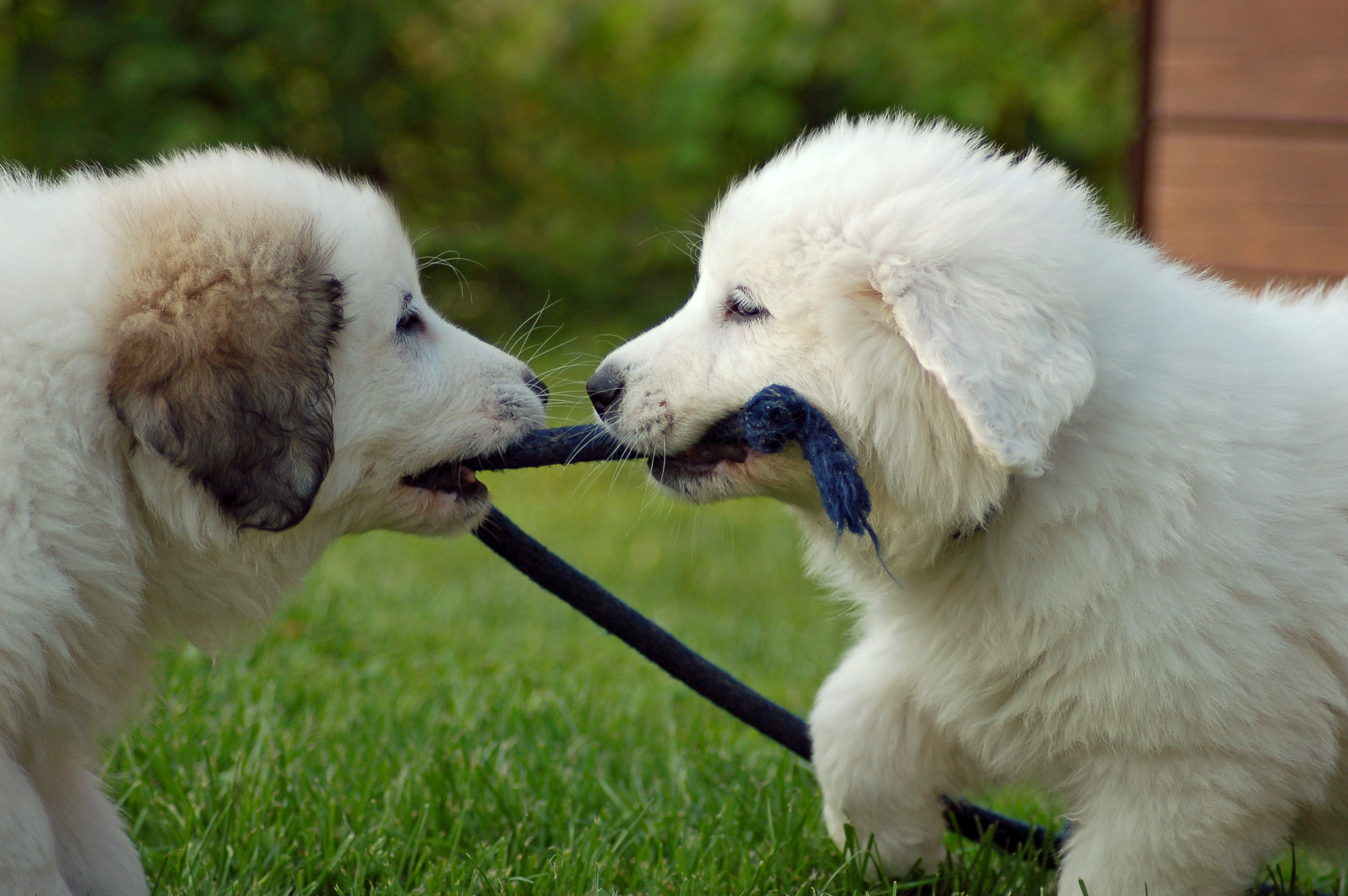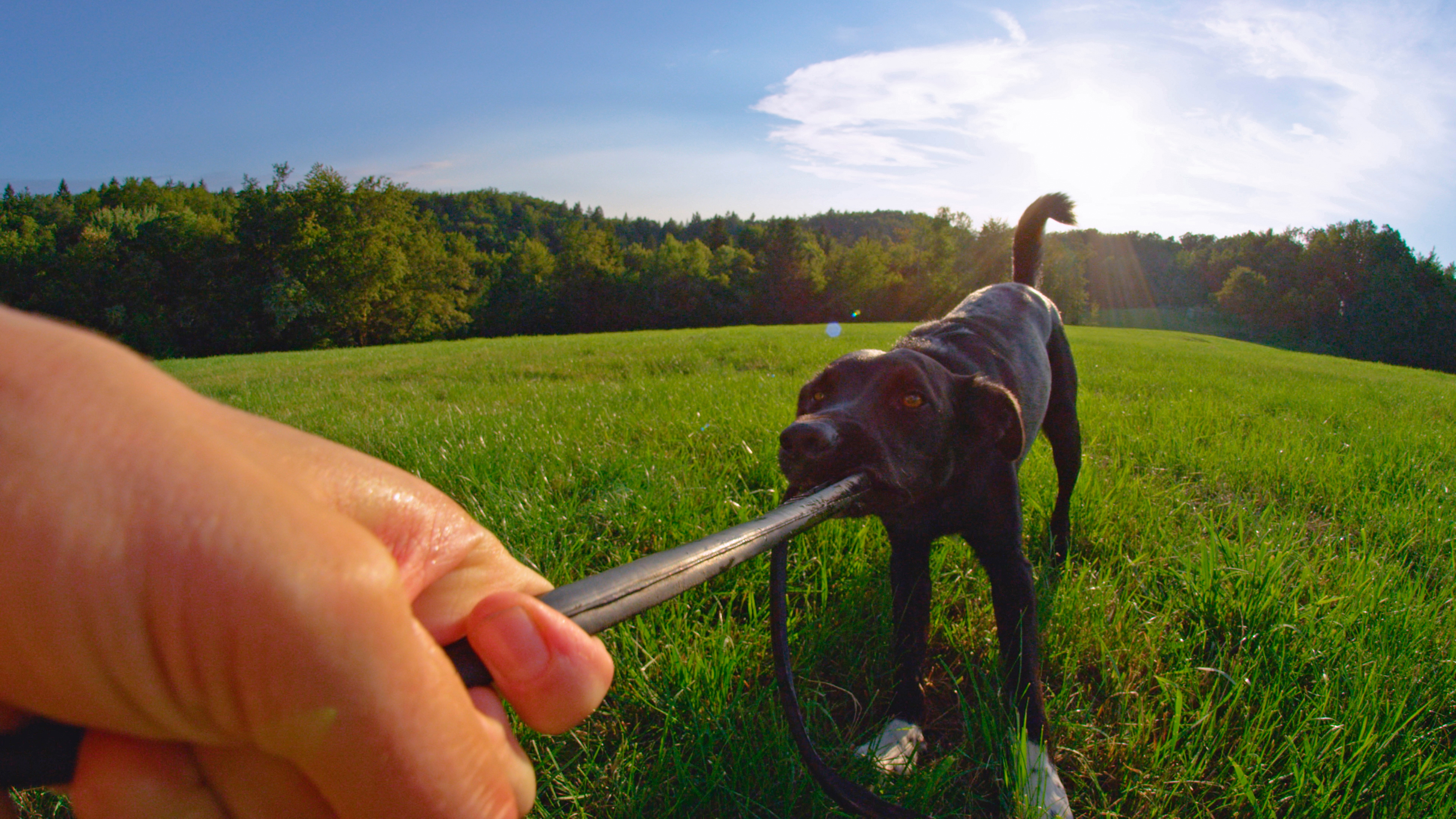Puppy Care Quick Tips: The Cutest, Most Useful Puppy Article Ever

Image: via i-h2.pinimg
She was only 12 weeks old when we brought her home.
Our sweet Annie girl has been part of our family for 10 years now, but it definitely doesn't feel as though it was that long ago that we were learning all we could about puppy care.
Oh, what fun!

Imge via GIPHY
Puppies are a lot of work, but the rewards of having "man's best friend" at your side for years to come are oh so sweet.
Getting Used to Your New Reality
Your fluffy new puppy, just like any addition to the family, is going to mean positives and negatives in your life. Now that you are living with them, if you haven't yet, it's time to take a frank look at the new reality in your home.
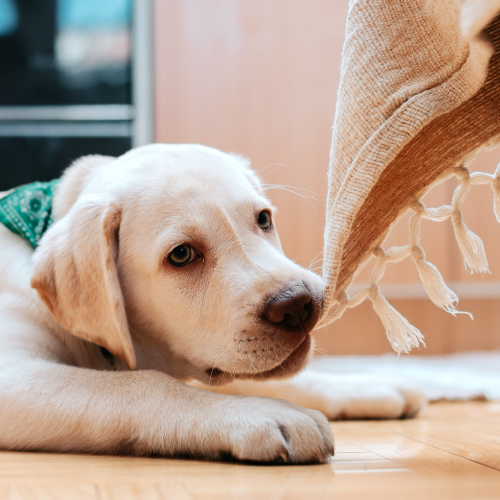
Cute puppy chewing part of furniture. Image By bnenin
Here's what you need to consider:
Pros and cons of your new best friend
Dogs are fun and full of so much love, the pros are what most people really focus on.
- Pros
- Cons
Ready or not: practical puppy parenting
Your new puppy is going to need space, time and money.

Image via i.pinimg
Just like adding any new member to your family, they'll also need toys and dishes, brushes, shampoos, toothbrushes, health care, a quality diet, and much much more.
You are going to need to understand how to discipline them in a healthy way, as well as praise them.
No, they aren't a child -- but they are a member of the family and are going to require a sizable investment.
They're worth it. But, let's get real here:

Image via GIPHY
Pet ownership is expensive.
The costs involved go far beyond the initial costs of bringing your puppy home or buying puppy care supplies. Good quality pet food is expensive and can run as high as $70 for a 20-pound bag, depending on the age, size, and breed of your dog.
New Puppy Parent Facts
Money magazine published annual costs provided by the ASPCA of pet ownership and had this to say about it:
The annual cost of owning a dog depends on its size: $1,001 for a small dog, $1,214 for a medium-sized dog, and $1,448 for a large dog, excluding one-time capital costs like spay and neutering fees and a carrier bag, according to ASPCA estimates. But, they're totally worth it for most of us!
Top 5 Most Popular Dog Breeds
The American Kennel Club releases a ranking list of the most popular dog breeds each year.
1. Labrador Retrievers
Year over year, the Labrador retriever is the most popular dog. They are not only adorable, but they are also loyal and friendly and funny, and the list goes on.
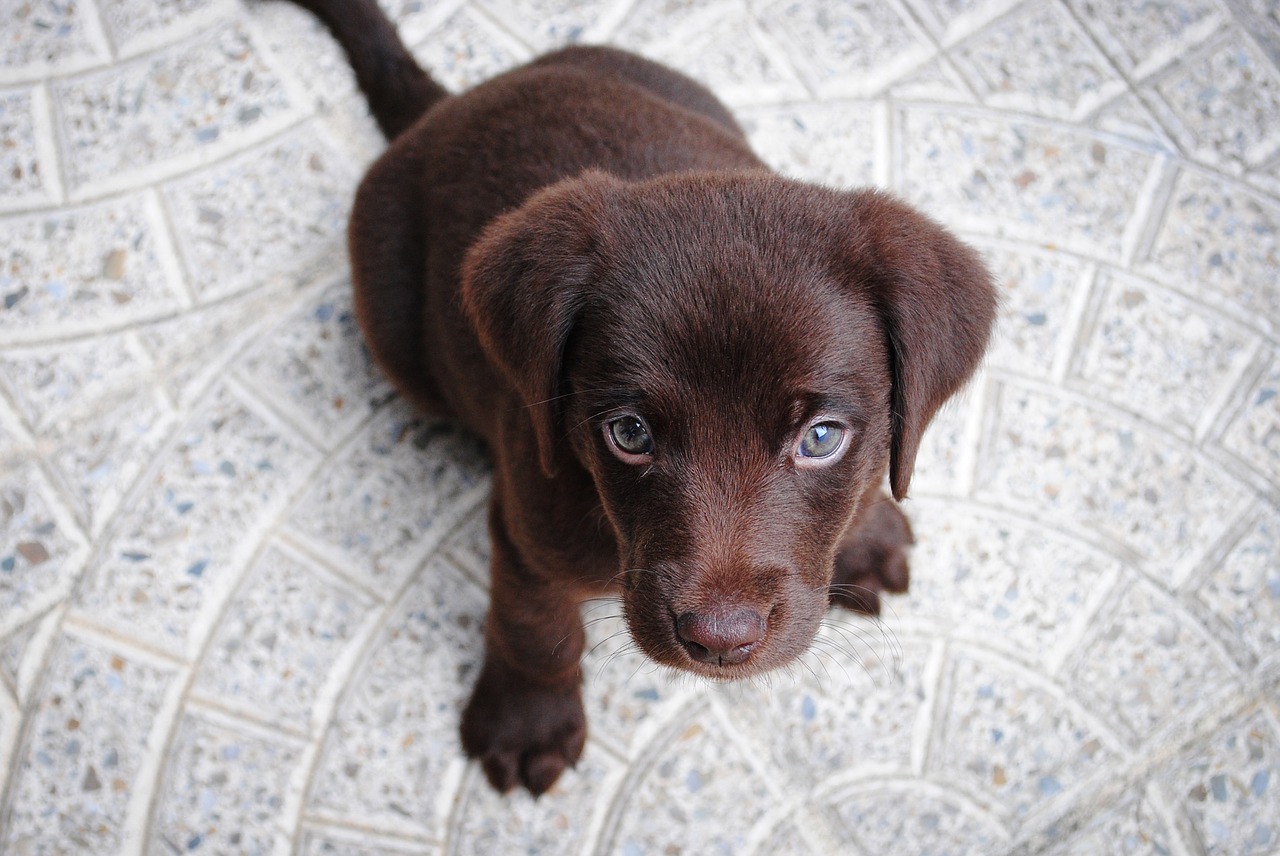
Image: by Free-Photos, via Pixabay
Tail wagging talk
"My favorite type of pet has always been a dog. They're loyal, kind, and offer endless affection."
2. German Shepherds
The German shepherd's popularity is also consistent. For the last five years, these highly intelligent dogs have ranked the second most popular dog breed.
These dogs are worker dogs with unfettered loyalty to their people. There is a reason why they are so popular.
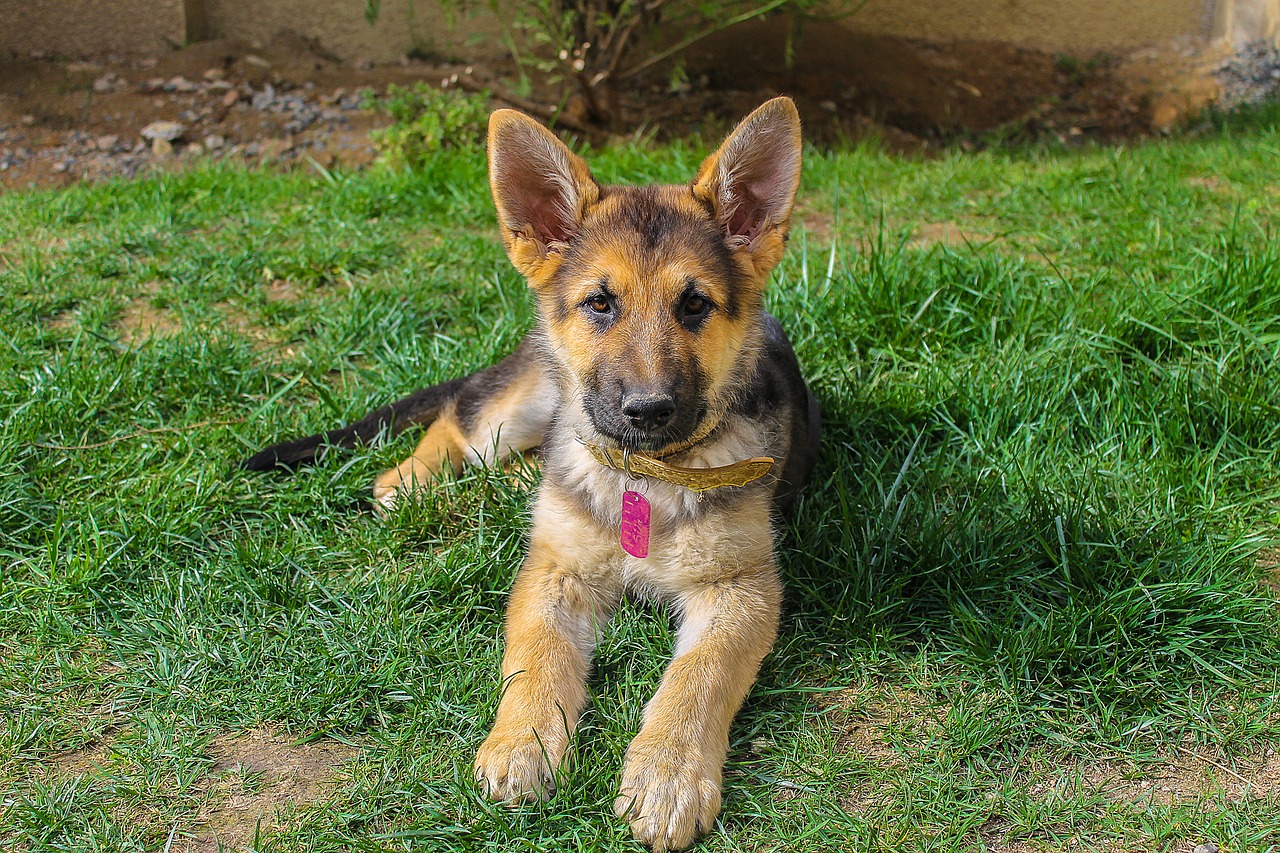
Image: Pixabay License, by Graphicalbrain, via Pixabay
3. Golden Retrievers
To conclude the consistent trifecta of popularity, the Golden retriever holds steady as a favorite family canine sweetheart. These energetic sweethearts grab you by the heart and never let go.
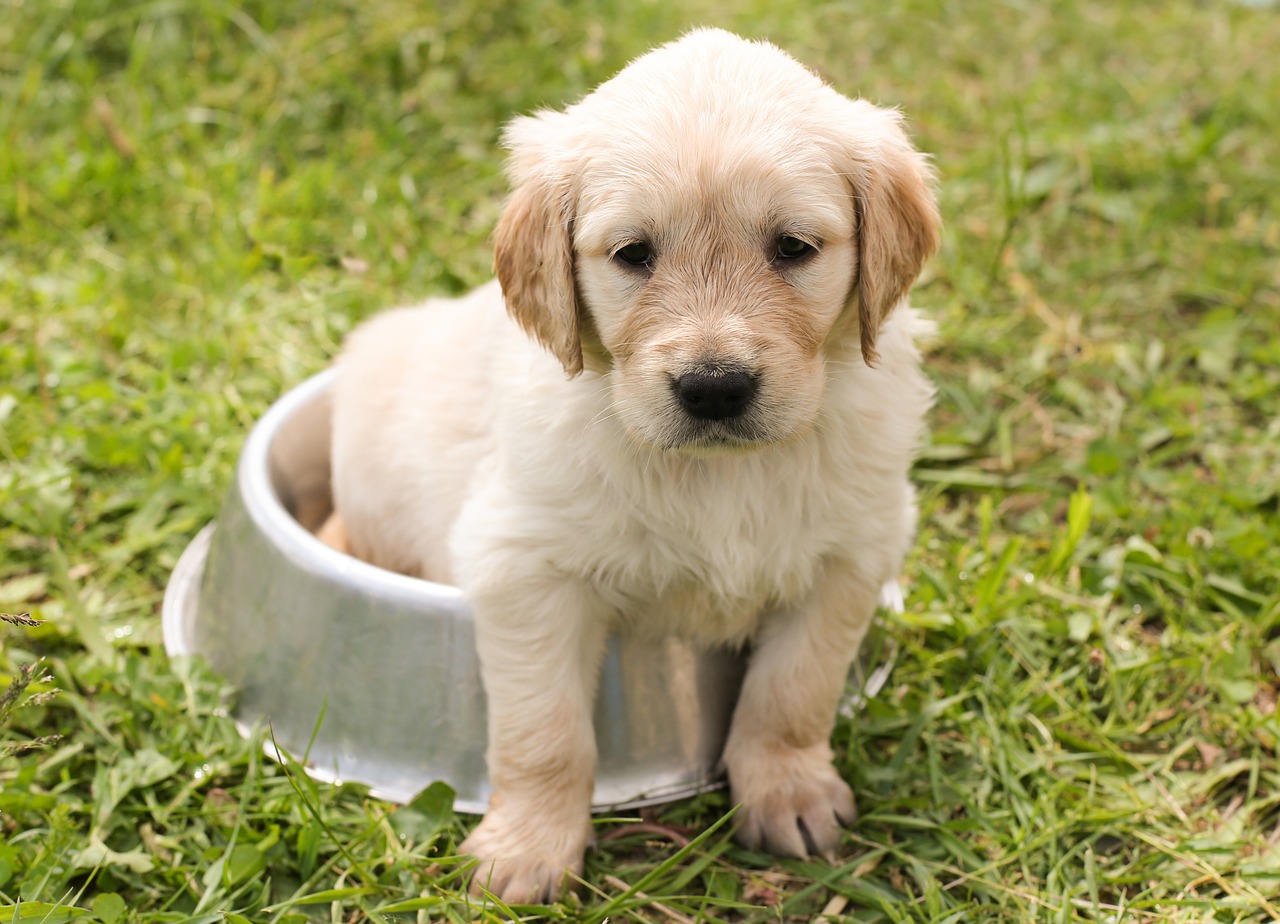
Image: Pixabay License, by Chiemsee2016, via Pixabay
4. French Bulldog
French bulldogs, otherwise known as "Frenchies" are gaining in popularity. In 2013 they were ranked 11, but now these adorable puppers are holding at spot number four on the AKC list.
With a smaller build, there is more flexibility with bringing a french bulldog into your life.
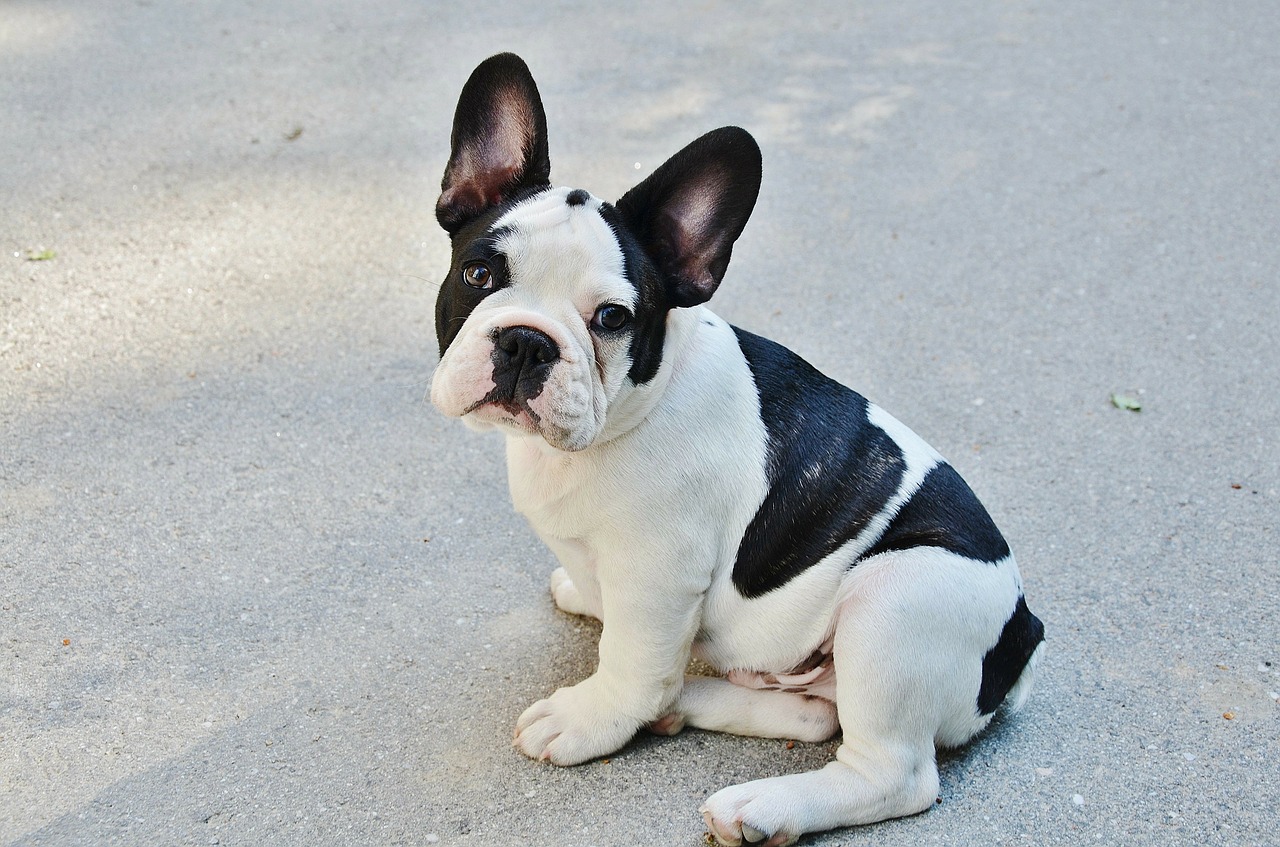
Image: Pixabay License, by GLady, via Pixabay
5. Bulldogs
Last but certainly not least, the fifth most popular dog breed is the bulldog.
These sturdy loyal friends are a fan favorite and for a good reason. Their calmness is contagious.
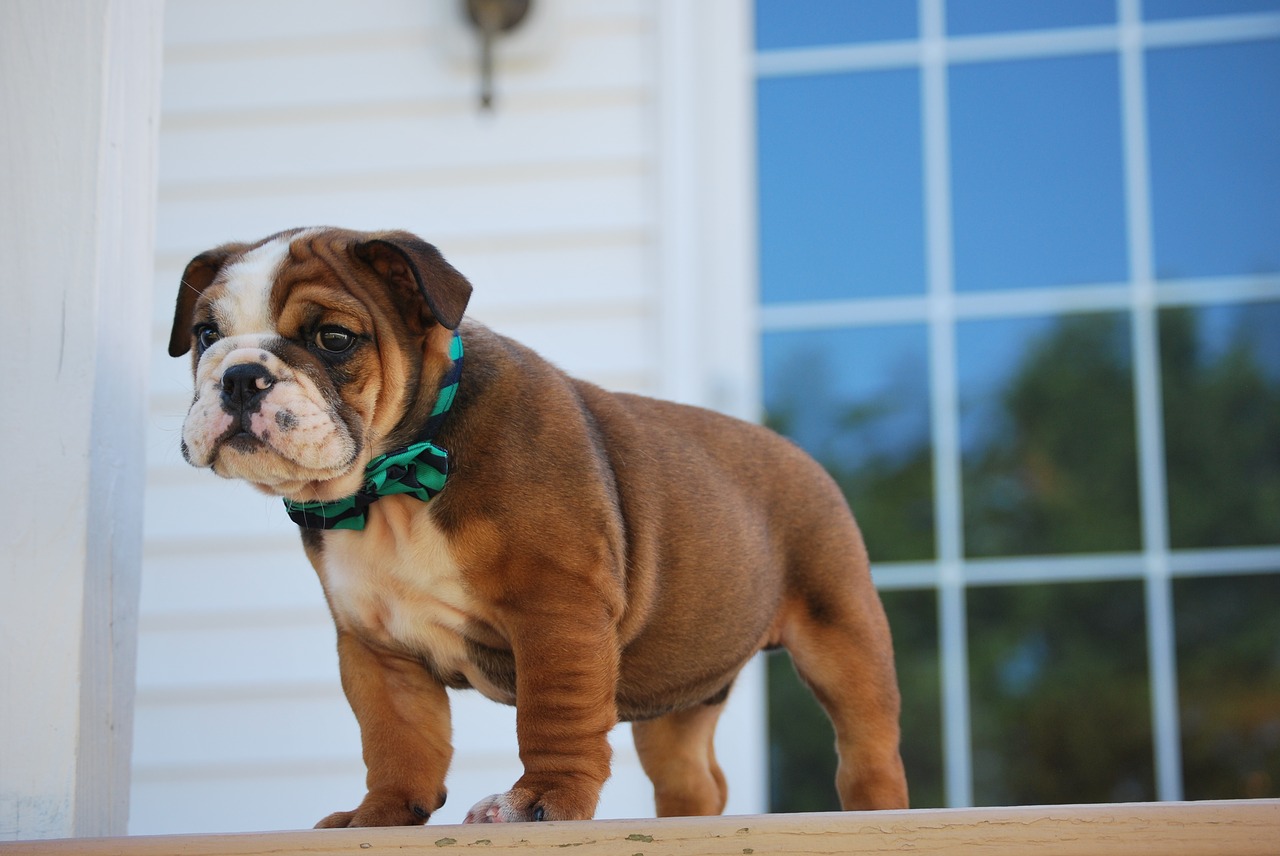
Image: Pixabay License, by melissaleighstandley, via Pixabay
Tail wagging talk
"Before you get a dog, you can't quite imagine what living with one might be like; afterward, you can't imagine living any other way."
Puppy Care: The Basics
Preparing for a puppy is much like getting ready for a baby. They are babies after all.
Unfortunately, you won't be having a "puppy shower" -- although that really should be a thing.
Let's start that!
Cute decorations, puppy themed games, cake -- puppy showers need to be a thing, stat!
If, like most people, you don't have friends and family jumping at the chance to shower you with gifts for your newest four-legged family member, just keep reading.
We've got your puppy care supply list covered.

via GIPHY
Supplies for puppy care
Here's some solid advice:
You should purchase all your puppy care supplies before bringing your new little love home.
If you are already holding that ball of wiggle, no worries!
Here is a handy checklist to help keep you organized on your puppy shopping spree!
Puppy Supply Shopping List
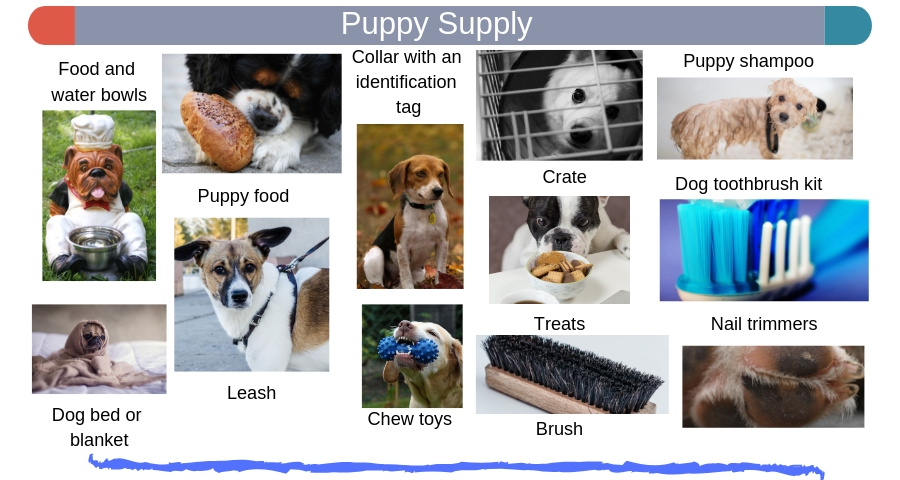
Image: via Canvas info-graphic
Puppy proofing your home
Before you bring a puppy home, you will need to puppy-proof your home and yard. Unlike when you bring home a newborn baby, with a puppy, you're jumping straight to toddlerhood!
Oh, the curiosity! These guys can get into everything!
The American Kennel Club advises:
New Puppy Parent Facts
Puppies are EXTREMELY energetic and curious, so when puppy-proofing your home, you must be thorough. Puppy-proofing is, in many ways, similar to baby-proofing, in that you’re trying to keep the puppy safe and out of things that he shouldn’t be in.
To get you started, here is a puppy-proofing checklist that will help keep your new friend safe.
What to expect when you're expecting. . . a puppy
Dogs are puppies way longer than you think!
Here's the deal:
Puppyhood can last nearly two years -- three for some breeds.
Most dog experts agree that there are 5 to 8 different stages of puppyhood. Of course, these are very dependent on specific breeds, but in general, these are the typical puppy stages and approximate time frames.
1
Neonatal period: 0 to 2 weeks
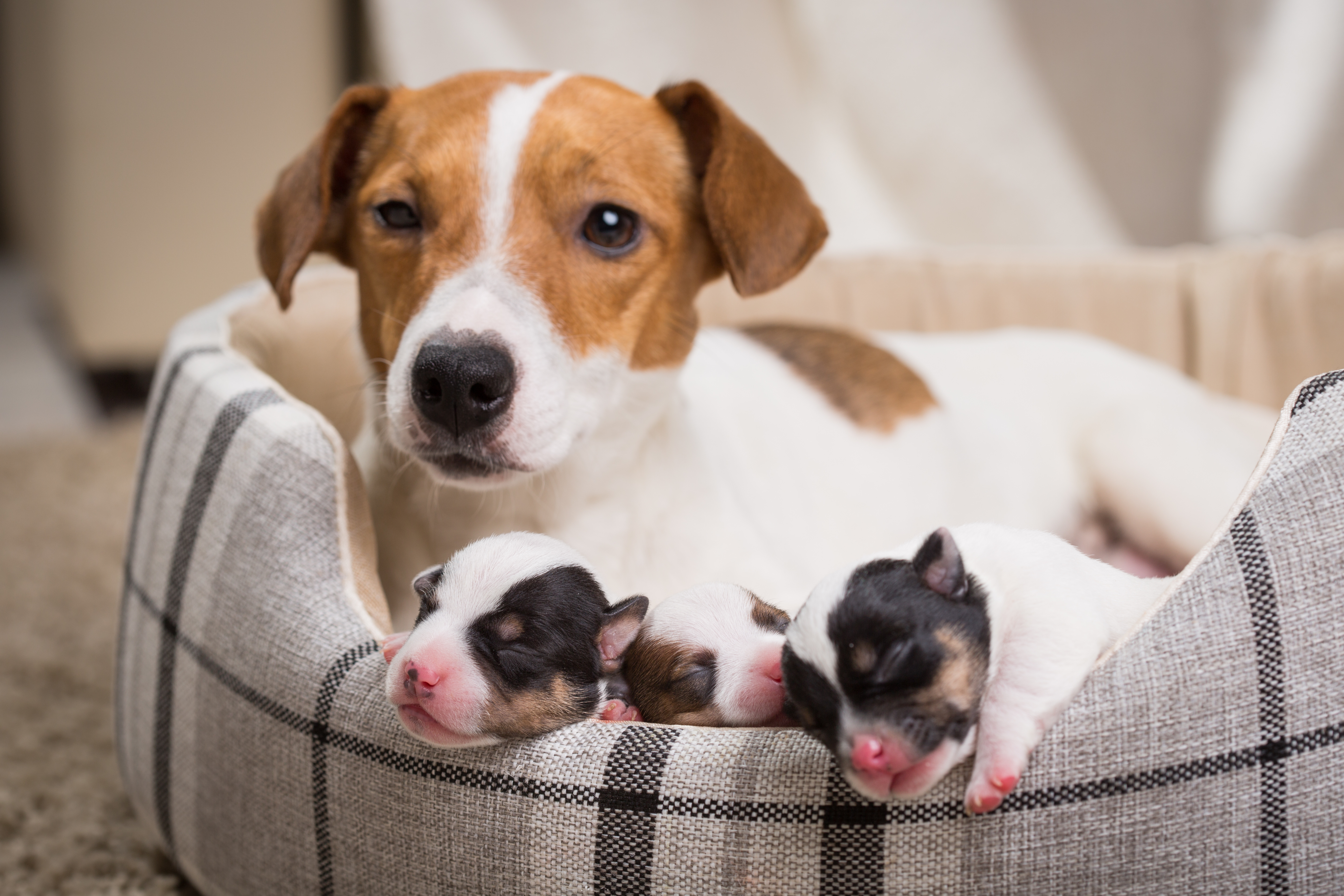
Jack Russell Terrier and puppies aged six days. Image By Evgenia Tiplyashina
4
Ranking period: 3 to 6 months
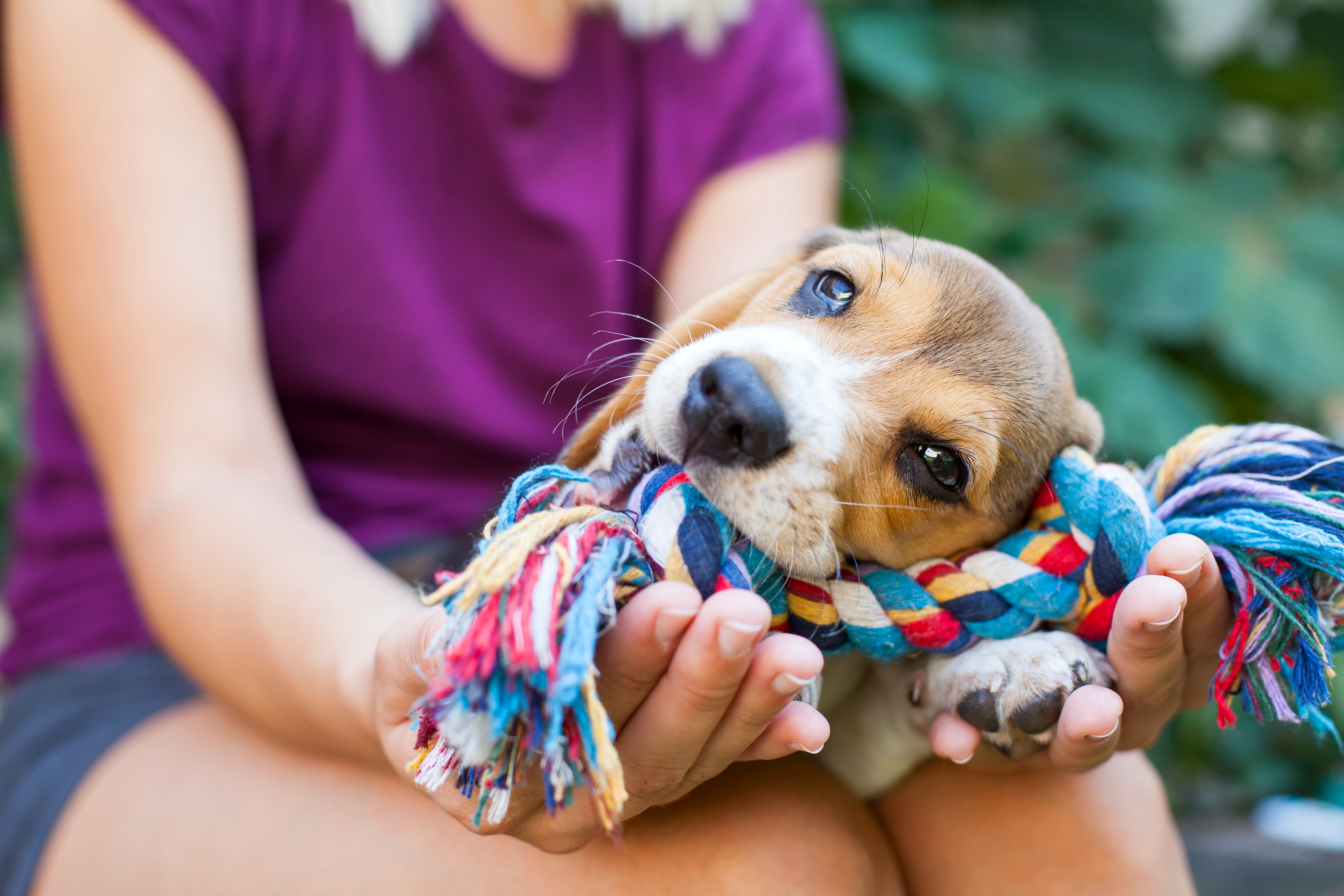
Adorable beagle puppy in female owner's lap playing with colorful toy. Image By Ocskay Mark
Children and Puppies
Oh my goodness, is there anything cuter than kids and puppies?
No, no there is not.
Puppies and kids are the cutest!

via GIPHY
And with just a bit of care and supervision, all the wee-ones, human and canine alike, can enjoy each others company and give us endless hours of swooning and adorableness.
But, there are a few rules to keep in mind to make this relationship one of mutual respect and trust for years to come.
According to the Animal Behavior College blog, you should do the following:
Give your puppy a quiet place away from kids for breaks and privacy. Teach children to leave your puppy alone while he/she is eating. Puppies need space. Do not let children sit or step on the puppy and limit how much they pick up the new furry friend. Don't allow children to grab toys away from the puppy. Teach them to make trades to avoid tug-of-war, which can lead to aggressive behavior. Teach gentleness. Show kids how to pet the puppy with slow strokes using a flat palm. Never, ever, ever leave children and puppies alone. Young children can accidentally hurt a puppy or visa versa. |
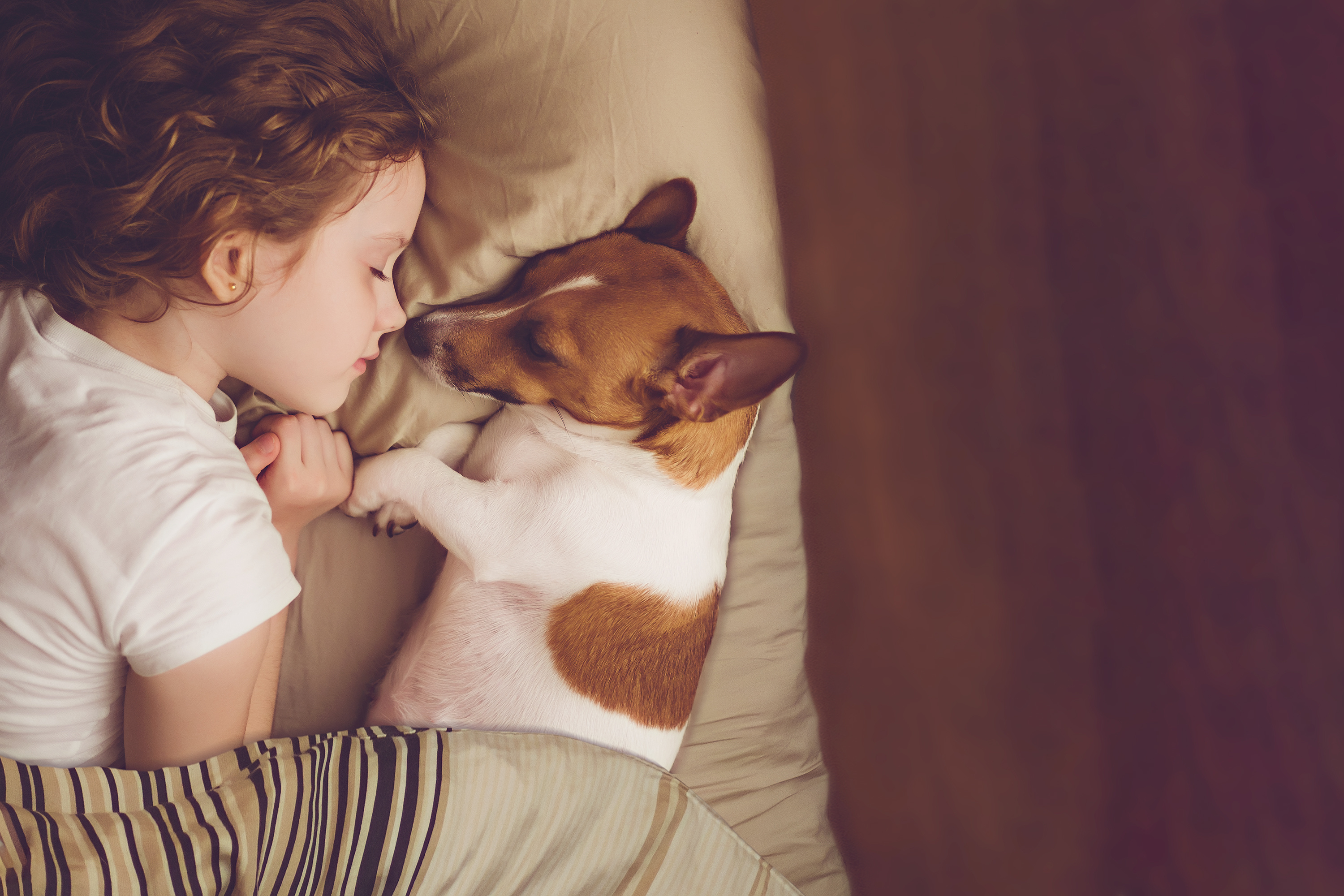
Sweet curly girl and jack russell dog is sleeping in night. Image By ulkas
Tail wagging talk
"No one appreciates the very special genius of your conversation as the dog does."
Including kids in responsibilities
An excellent way to foster bonding between child and pup is to include them in the daily puppy care tasks.
This can quickly be done by using a checklist like the one below.
Not only will this help teach responsibility for the kids, but it helps establish a pack order where child ranks above pup.
Puppy care checklist for kids
Daily Puppy Care Checklist
Day | Care |
|---|---|
Monday | Feed |
Tuesday | Water |
Wednesday | Love |
Thursday | Play |
Friday | Feed |
Saturday | Repeat |
Puppy Care: Health and Wellness
Just like people, puppies need to see a doctor regularly during the first year. Your first vet visit will be the start of a new relationship between you, your vet, and your pup.

Image via ipupster
First vet visit
During the first vet visit, your puppy will get the works. They will be weighed, have their temperature taken and undergo a thorough examination.
The vet will listen to their heart and lungs, examine their skin and coat, look into their mouth and check their teeth.
Even their feces will be examined, so you'll probably be asked to bring a sample. Puppies often have roundworms, so don't be surprised if your pup needs some medicine to get rid of the parasites.

Image via dogster
Vaccinations
Puppy care involves getting your special friend required vaccinations.
Here's the essentials:
Just like babies, these shots are given over time and include boosters.
Your puppy may have received their first round of injections from the breeder or rescue. However, your first vet visit will likely include some boosters.

Image via patchpuppy
Spaying and neutering
Old advice is not always good advice.
New research shows that dogs allowed to mature naturally reap benefits. However, dogs fixed prematurely (under one year) face significant drawbacks.
That research has pushed many reputable vets and dog groups to change their recommendations regarding when you should fix your puppy.
So, what is the right call?
The right person to speak to about this is your vet...
many things come into play when deciding the right time to fix your puppy.
Their age, breed, weight, health, or even size can all change the "right" time for you.
Here's what the AKC has to say:
"The American Kennel Club® opposes laws that mandate the spaying/neutering of dogs. Spaying/Neutering are major surgeries and the decision to spay or neuter a dog should be made by the dog’s owner in conjunction with their veterinarian. Recent scientific studies demonstrate that spaying/neutering, particularly before a dog is fully mature, may result in detrimental long-term health impacts. In light of this information, AKC encourages breeders, owners and veterinarians to consult on the appropriateness and timing of spaying or neutering an individual dog."
Microchipping
Microchipping is a safe and affordable peace of mind.
If you've ever had a moment of fear or lost a beloved pet, you know how devastating that is.
Don't make an easily avoidable mistake!:
If your beloved pet becomes separated from you, a microchip can make the difference between days or weeks of searching or having someone call you with the whereabouts of your best friend.
Here's the best part:
Most vets and shelters have microchip scanners, which makes reunions happy sooner.
Questions to ask your vet about puppy care
?
Top 10 Questions You Need to Ask Your Vet

Expected vet costs in the first year
We've already talked a bit about pet costs but here's the kicker:
The AKC has also estimated the expenses of dog ownership. For the first year they say:
Excluding the initial cost of purchasing or adopting a dog, many estimates of the cost for the first year of dog ownership fall between
$1,600 - $2,000
Pet Insurance
Pet insurance can assist with veterinary costs.
Coverage levels vary. The best plans will cover emergencies and routine care.
You may need to shop around to find the perfect plan for you and your dog.
Signs of illness
If you've never had a dog, you may be wondering how you'll be able to tell if they are ill.
"It's not like they can say they feel bad. How will I know?"
Fortunately, there are a few obvious signs that your four-legged friend is under the weather.
Eating habits
Watch for changes in eating habits. Lack of appetite or increased hunger can be signs of a medical condition.
Excessive thirst
Excessive thirst can also be a sign that something is going on with your pet's health.
Look into their eyes
Eyes aren't just windows into the soul; they are also are an indicator of general health when it comes to our dogs.
If your pet's eyes look red, cloudy or have discharge, you should get them to their doctor to be checked out.
Vomiting
Every dog will vomit occasionally.
When you need to worry:
Frequent vomiting, however, or vomiting blood means you should be scheduling a vet appointment.
Energy levels
If you notice your dog has less energy or is lethargic, you should get it checked out.
The poop scoop
It's a good idea to keep an eye on how your dog's poop looks.
Seriously, stop laughing and look at the poo...
Changes in consistency or things like blood or mucus can be signs of illness.
Bottom line?
Keep a keen eye on behavior changes with your puppy, and you will pick up on when they are ill.
Puppy Care: Nutrition and Exercise
Two of the most significant components of puppy care is what to feed them and keeping them active.

Food

Image via thehappypuppysite
So, what should your puppy eat?
In recent years the pet food market has exploded. There are so many options, and it can feel a bit confusing.
First and foremost...
talk to your vet about specific dietary needs for your dog.
Is grain-free the best?

Image via primallyinspired
Grain-free is not necessarily the best diet for our dogs, even though there is much hype about feeding rain-free. In a recent study from the Journal of American Veterinary Medical Association, grain-free foods have been linked to diet-associated diseases.
Here's the deal:
Talk to your vet about your puppy eating a grain-free diet.
Recommendations may be based upon age and breed. So an individual approach will be best.
Dry kibble vs. wet food

Image via rottweilerhq
The dry vs. wet debate really boils down to your personal preference and your dog's palate.
Dry kibble also has advantages for your dog's dental health.
Quantity to feed

Image via bluebuffalo
The amount you feed your puppy will be based upon their age, size, and breed.
How to know you're feeding enough?
Your vet will monitor their growth and weight closely and make recommendations based upon your dog's progress.
If signs of obesity are seen, they may ask you to supplement their puppy food with canned vegetables, which can act as a low calorie filler.
Frequency of feeding

Image via abradortraininghq
Puppies, like babies, have higher nutritional needs for their rapid growth.
What does that mean?
They will eat more frequently when they are young pups and as they grow and develop their meals will be spaced out.
Talk to the rescue or breeder regarding their initial feeding schedule and then consult your vet.
Here's what you should be doing:
Typically, a young puppy up to twelve weeks will eat multiple times per day. Once they reach a sufficient age and weight, they will usually go down to two feedings per day.
Importance of exercise

Image via blog.porchpotty
Oh my gosh, when puppies come home, they are just little furry balls of energy!
One way to manage that energy is to make sure your puppy gets plenty of exercises. It's an integral part of puppy care.
Exercise not only provides physical benefits for a healthy weight...
but it is also vital for your puppy's mental well-being.
Activity will help prevent boredom that consequently becomes behavioral issues.
Animal Planet has a great article about puppy exercise needs. They say:
Puppies need five minutes of exercise per month of age up to twice a day, according to the U.K. Kennel Club. In other words, a 3-month-old puppy will need 15 minutes of exercise while a 4-month-old will need 20 minutes.
Bonus:
This often promotes more activity for you and in turn, results in better physical fitness.
You can thank your puppy for that with lots of head pets and rubs.
Tail wagging talk
"Opening up your life to a dog who needs a home is one of the most fulfilling things you can do."
Puppy Care: Training
Now for the fun, yet challenging part of puppy care.
Training!
Routine

via GIPHY
One of the absolute best things you can do to assist with training is getting your puppy into a routine. Soon, your new pup will know what to expect just based upon their routine -- and that is half the battle of dog training.
A routine has so many benefits, from feeding schedules that keep your pup satisfied and content to the biggest challenge of housebreaking. Exercise and play worked into that routine will help prevent boredom.
A routine will help your pup know the ropes sooner.
Ok, things are about to get really cute! Keep reading!
Basic training
Dog training is one of the best ways you create those stable bonds with your puppy. There are a plethora of videos available on the internet that will go over the basics. This video series in particular covers some puppy training basics.
Watch it. Save it. Practice it with your puppy when you bring them home!
Crate training
Crate training is not just a matter of convenience; it's a matter of safety.
There are times when you will not be available to give your puppy your undivided attention. While we talked about puppy-proofing, even the most puppy-proofed areas of your house can still be a danger zone.
Crate training can also make house training much easier.
Remember, the crate will be a safe space. In no time at all, your dog will see their crate as their den and will often retreat there when they need a break.
Stick with it and the rewards will be huge!
House training a puppy
Oh, the dreaded house training. This is probably one of the more challenging parts of training a puppy. But, with consistency and dedication, it doesn't' have to be.
The Humane Society has a great how-to guide for housetraining your puppy.
Here's the deal:
A bonus to the frequent outdoor visits is you start establishing basic leash training skills also.
It all works together.
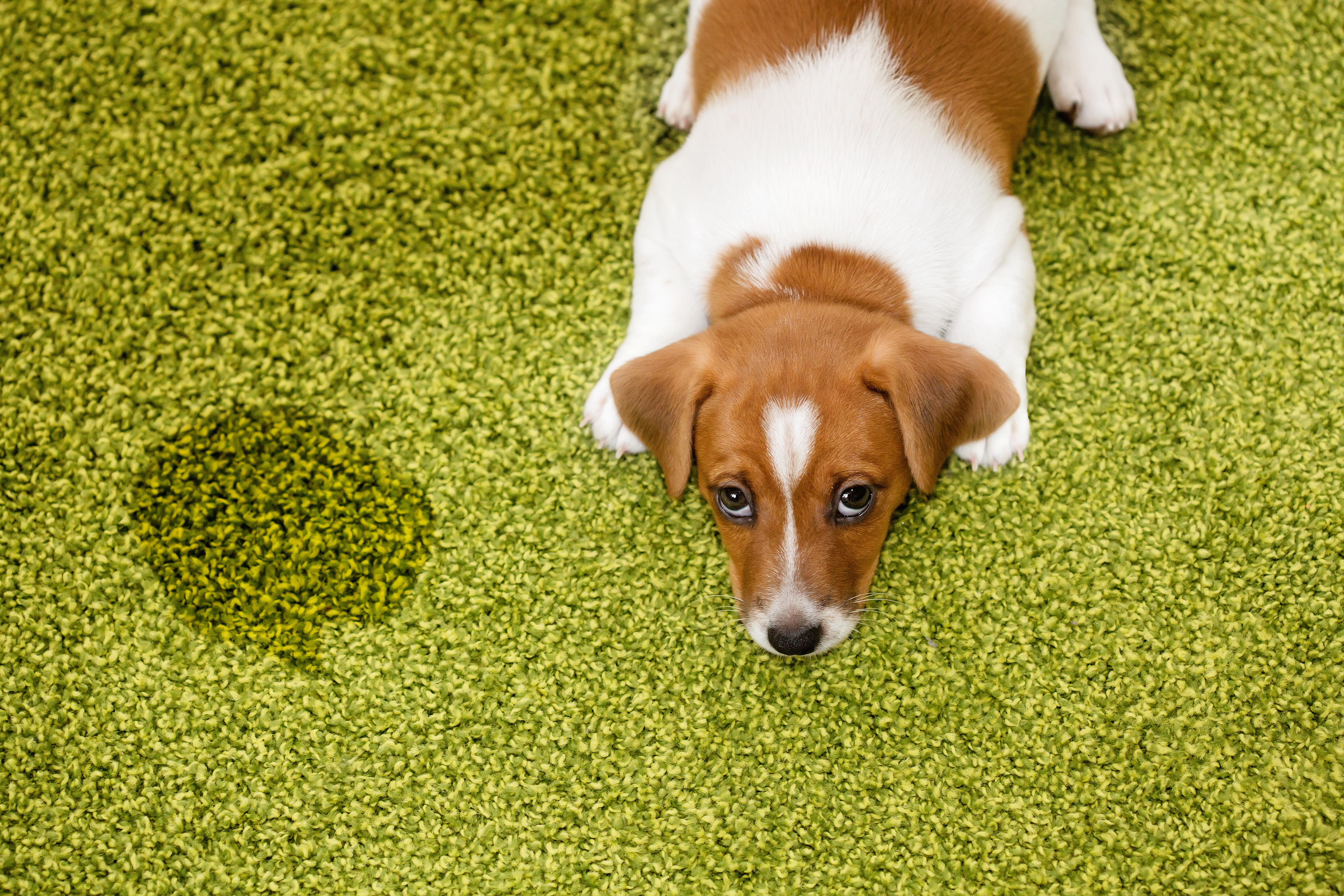
Puppy pees on the carpet. Image By ulkas
How to handle accidents
Accidents will happen. If you don't catch them in the act -- scolding will not be helpful. If you do catch them in the act, tell them "no" and then immediately take them outdoors to finish (if you can get them in time).
More training tips
As your puppy develops and gets the basic training down, obedience training helps build confidence and makes for a better-behaved companion. It really is an essential part of puppy care.
You're going to want to know all of this.
Discipline
Punishment and discipline are two completely different things, so please do not confuse the two.
Discipline communicates expectations. Routine is discipline. Consistency is discipline.
Your puppy does not need punishment. They need discipline. The following video by Eukanuba explains much of this, and the dog is absolutely adorable!
Tail wagging talk
"A dog will teach you unconditional love. If you can have that in your life, things won't be too bad."
Common obedience training issues
As you train, you will run into some common issues. Here are a few tips on how to handle those

Image vi puppyintraining
Nipping and biting
Nipping and biting are ordinary teaching moments during puppy training. Puppies begin to learn bite inhibition while still with their mom. It is up to you to continue the practice.
The ASPCA advises:
When you play with your puppy, let him mouth on your hands. Continue play until he bites especially hard. When he does, immediately give a high-pitched yelp, as if you’re hurt, and let your hand go limp. This should startle your puppy and cause him to stop mouthing you, at least momentarily.

Image via dogsaholic
Walking on a leash
While walking on a leash is not a trait your puppy is born with, it is one of the easier skills to teach. Likely because you will be using your leash so often with all those potty breaks!
The AKC provides some simple tips to help with this process. They include teaching cues and making your puppy come to you. Also, practice using the leash inside your house for familiarity.
As your pup gets more familiar with the leash, you can move to more advanced things like teaching him not to pull on the leash and walking like the well-mannered angel he or she is.

Image via barkinglaughs
Chewing
Chewing is what gives puppies a bad rap. It is a destructive behavior, and we've all heard horror stories about ruined shoes, half-eaten couches, and even holes in walls.
Some chewing is part of normal puppy development. So, provide plenty of things your pup can use for teething.
Destructive chewing can be signs of boredom, separation anxiety and frustration.
Keep your pup engaged. Follow routine and exercise — crate train.
All of these things will limit the amount of destructive chewing that takes place.

Image via topdogtips
Socializing
Socializing is a puppy care key that fosters happiness and confidence in your dog.
The American Kennel Club has the following to say about socialization:
Proper socialization can prevent a dog from being always fearful of children, for example, or of riding in a car, and it will help him develop into a well-mannered, happy companion.
Fortunately, taking your pup to puppy training classes provides an excellent opportunity for human and canine socialization alike.

Image via dog-care-knowledge
Separation anxiety
Last but not least is the dreaded separation anxiety. Unfortunately, it's not really known why some dogs have it, and some don't, but it can be one of the more destructive traits.
The ASPCA has a large number of tips and tricks to help combat separation anxiety. They say:
When treating a dog with separation anxiety, the goal is to resolve the dog’s underlying anxiety by teaching him to enjoy, or at least tolerate, being left alone. This is accomplished by setting things up so that the dog experiences the situation that provokes his anxiety, namely being alone, without experiencing fear or anxiety.
The Doggone' Truth
Bringing your puppy home will be a memory you keep with you for years to come. It is the start of one of the most rewarding and tender relationships we can have.
With these tips, you'll be a puppy care pro in no time!
What are some puppy care tips you'd like to share with new puppy parents? Post them in the comments.
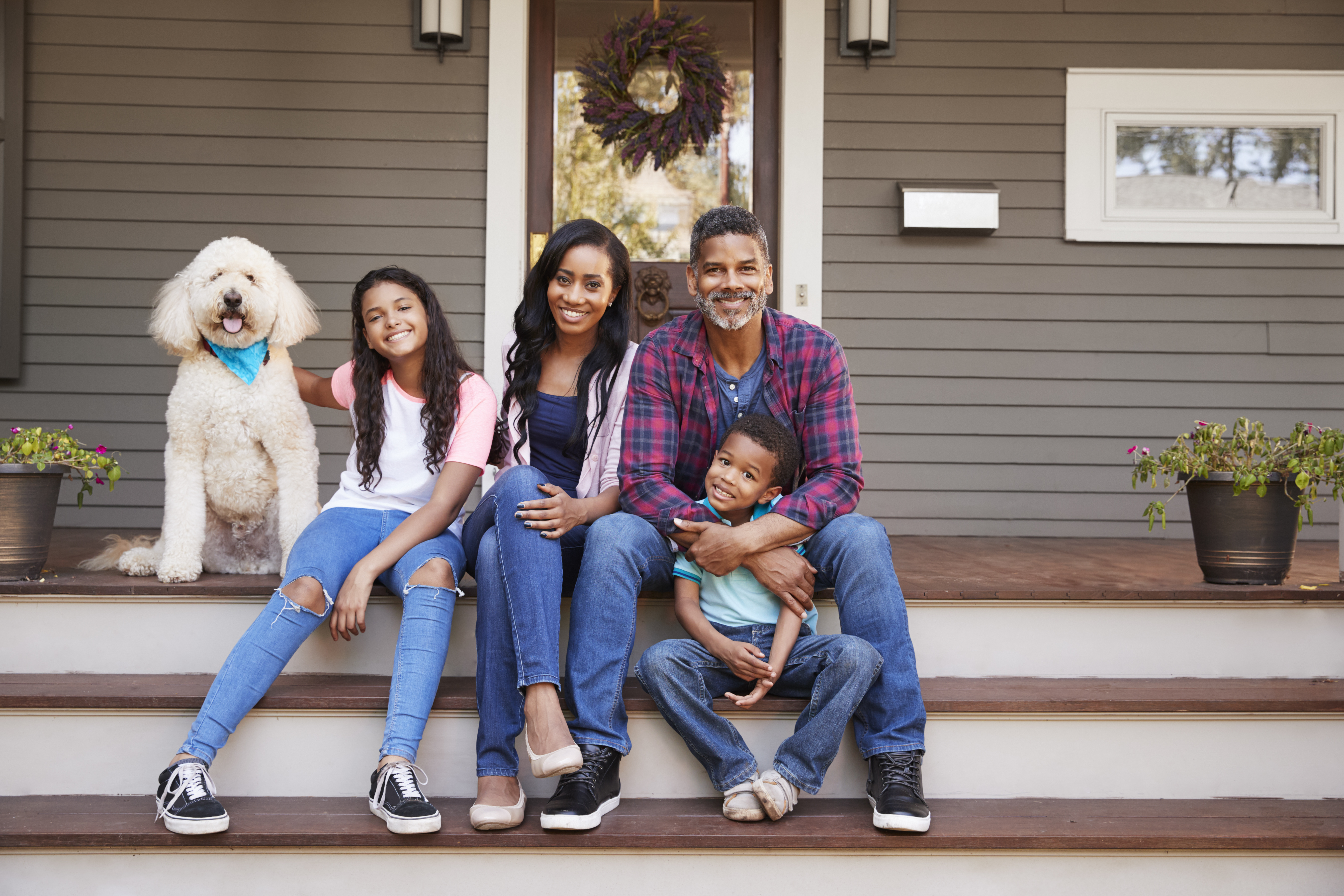
Family Portrait. Image By Monkey Business

